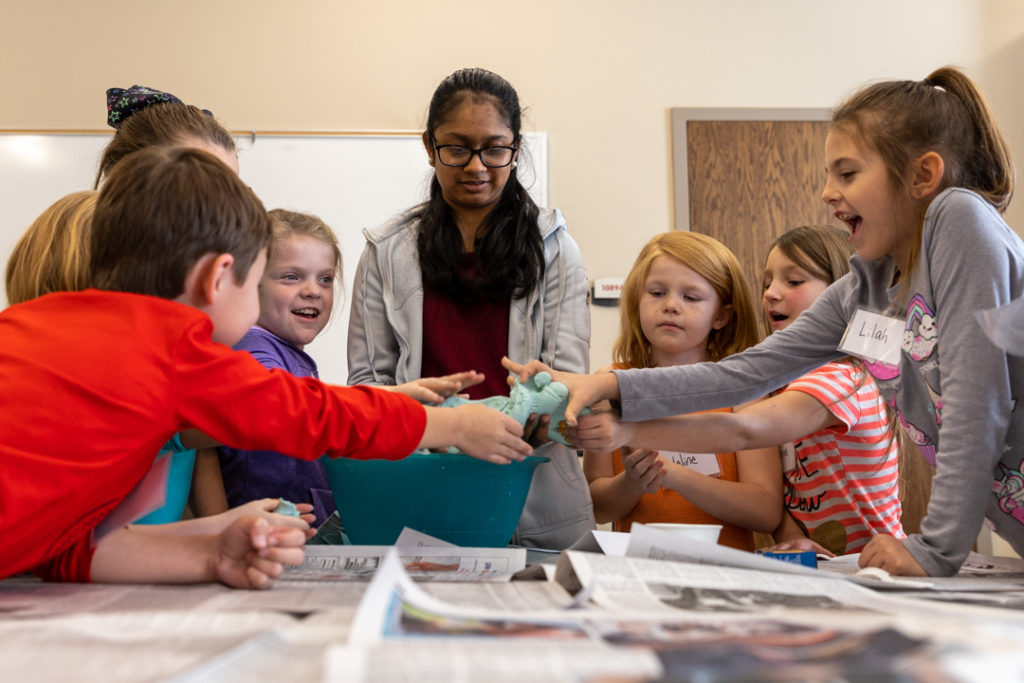
By the Duke Talent Identification Program
Paulette dreads piano recitals. Even though she’s given many of them, anxiety makes her feel sick before performing. It abates once she begins to play, but stage fright takes the fun out of playing before an audience. What can her parents do to ease her anxiety?
Xavier is a talented third-grader who has a low tolerance for frustration and cries when he can’t complete a homework assignment easily. His parents often battle with him over his avoidance of homework. What techniques might ease his frustration?
The goal in coping with anxiety is not to eliminate it but to make it work for us.
One task of growing up is learning to manage anxiety. Gifted children do not struggle with anxiety more than other children, but their perfectionism, drive, intensity, and early understanding of adult issues may arouse uncommon fears in them. Challenge itself can provoke anxiety. If children lack tools for managing stress, they may avoid challenging themselves and thus compromise what they can achieve. Anxiety is not the enemy. In fact, it helps keep us motivated and focused.
If Paulette learns to reduce her anxiety from a distracting feeling that brings on nausea to a tension that she can channel, she will begin to enjoy public performance. The goal in coping with anxiety is not to eliminate it but to make it work for us. Adults should suppress the impulse to rescue anxious children; instead, they should coach them with the skills and strategies they need to harness their anxiety.
Managing anxiety is quite simple, but it does require practice. Coping with anxious feelings means learning to breathe, relax, and move toward what’s frightening. Learning to breathe properly is the essential first step. When we’re nervous, we tend to take small breaths, and within a few minutes the lowered oxygen level in our blood produces symptoms that mimic those of heightened anxiety: lightheadedness, physical weakness, perspiration, rapid breathing, nausea. In extreme cases, these symptoms lead to panic.
Deep, controlled breathing maintains the right balance of oxygen in the bloodstream and enables people to keep their anxiety in check. To teach children to breathe properly, have them put one hand on their chest and one hand beneath their belly button. Then ask them to breathe deeply several times. If they’re breathing properly, their bottom hand should move out more than their top hand. In deep, controlled breathing, the diaphragm expands fully, allowing the lungs to fill entirely. If Paulette learns to apply this technique before stepping onstage, she may be able to reduce or perhaps eliminate her stage fright.
The second step is learning to relax. Because the body cannot be tense and relaxed at the same time, relaxation is the antidote to fear. The most widely used strategy is progressive relaxation, which involves alternately tensing and relaxing major muscle groups. Have children begin by balling their hands into fists for five seconds, then slowly opening them for ten. The sequence of tension and relaxation continues for every major part of the body. Once mastered, the technique can be abbreviated until it is possible to relax the body in less than a minute with just a verbal cue. Knowing how to calm oneself is essential for making the most of one’s abilities.
Finally, even though it’s human nature to avoid what unnerves us, the third step is to move toward it in order to overcome our fear. Avoidance is highly effective for reducing anxiety in the short term, but eventually anxiety will overtake us. That’s why parents and teachers should not rush to rescue children who struggle with anxiety. Instead of enabling their avoidance, we should help them master breathing and relaxation skills and encourage them to take small steps toward the things they fear.
By using breathing and relaxation techniques to control his anxiety, Xavier can build up his tolerance for frustration. By increasing the amount of time he spends on challenging assignments by five minutes every week, he will soon be able to spend thirty minutes on them without feeling overwhelmed.
When fear and worry are so severe or so long-lasting that they significantly disrupt normal functioning, when children persistently avoid necessary situations, or when they are chronically distressed, it’s time to seek professional assistance.
Throughout their lives gifted children will face challenges that worry them. They will change schools, have demanding teachers or bosses, lose friends, and leave home. It’s not possible to live without anxiety, nor should that be the goal. Anxiety often drives us to give our best effort. Learning to deal with it facilitates achievement and enables gifted children to make the most of their abilities.
—Maureen Neihart, PsyD
Maureen Neihart, a clinical child psychologist in private practice, has worked with gifted children and their families for more than 20 years.
Suggested Resources
- Coping with Anxiety: 10 Simple Ways to Relieve Anxiety, Fear, and Worry, by Edmund J. Bourne and Lorna Garano, New Harbinger, 2003
- Helping Students Overcome Depression and Anxiety: A Practical Guide, by Kenneth W. Merrel, Guilford, 2001
- Progressive Relaxation and Breathing, by Matthew McKay and Patrick Fanning, New Harbinger, 1986
